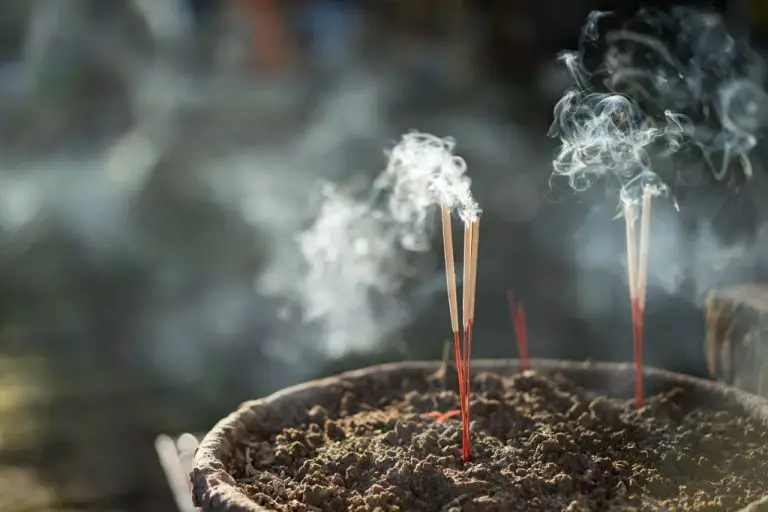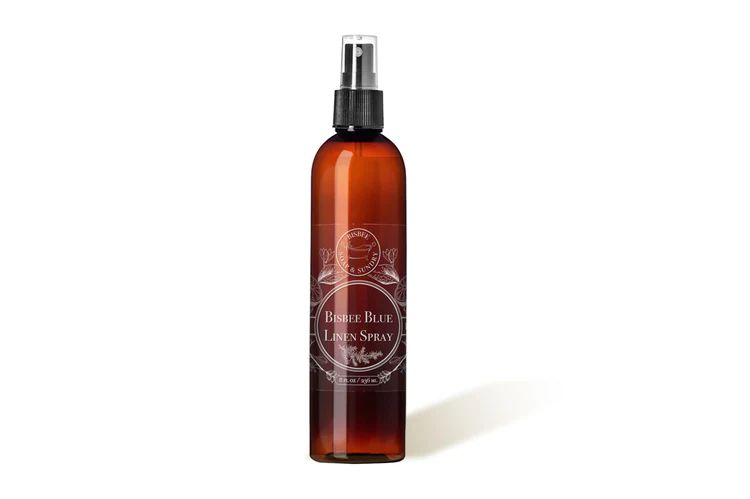What Flavour Is Nag Champa?
Nag Champa incense has a long and storied history rooted in ancient Hindu and Buddhist monasteries in India and Nepal. Known for its captivating and unique aroma, Nag Champa incense has been used for centuries in religious ceremonies, meditation, and aromatherapy. The popularity and mystique of this incense has spread around the world, making it one of the most recognized incense fragrances today.
With such a distinctive scent, many who enjoy nag champa incense wonder – what exactly gives it that unmistakable aroma? This article will explore the origins, history, and use of nag champa incense. We’ll identify the key components that make up its fragrance profile, and put together the pieces to answer the main question around this mystical incense – what flavor is Nag Champa?
Origins
Nag champa originates from India and Nepal, where it has been used in Hindu rituals and Ayurvedic medicine for centuries. The name comes from the Sanskrit words “nag” meaning snake or cobra, and “champa” which is the name of the frangipani/plumeria flower. According to Wikipedia, nag champa was originally made from a blend of sandalwood powder and the flowers of the champaca tree (https://en.wikipedia.org/wiki/Nag_champa).
The traditional method of making nag champa incense involves hand-rolling the ingredients into a stick or cone shape. Key ingredients include:
- Sandalwood powder – Provides the base woody/earthy notes
- Champaca/frangipani flowers – Adds a sweet, floral aroma
- Halmaddi/agarwood – Contributes a rich, balsamic fragrance
- Other herbs, gums, resins – Give additional aromatic nuances
This handmade approach using natural ingredients results in the unique scent that nag champa is known for. The formulas and ingredients can vary between different producers, but sandalwood and champaca/frangipani remain the hallmarks of nag champa’s origins.
Aromatic Compounds
Nag champa derives its distinctive scent from a complex blend of aromatic compounds. The main components giving nag champa its characteristic fragrance include:
Linalool – A terpene alcohol with a pleasant floral aroma. It provides a sweet, woody note to nag champa.
α-Humulene – A sesquiterpene found in hops that gives a woody, earthy aroma. It adds depth and subtle spiciness to the nag champa fragrance.
Benzaldehyde – An organic compound with a strong almond-like odor. It lends a sweet, nutty nuance to the overall scent.
Benzoic acid – A crystalline solid known for its faint, sweet smell reminiscent of benzoin resin. It contributes a balsamic, vanillic quality.
Geraniol – A monoterpenoid with a distinct rose-like scent. It provides floral, fruity top notes to nag champa’s aroma profile.
β-Caryophyllene – A sesquiterpene found in many essential oils such as clove oil and black pepper. It adds a warm, mildly spicy element.
These compounds blend together in a harmonious balance to produce the rich, sweet, spicy, and woody aroma that characterizes nag champa incense.
Woody Notes
The woody notes like sandalwood and cedarwood are core to the Nag Champa fragrance. According to CandleScience, sandalwood blends with patchouli in the base of the fragrance.
Sandalwood has a rich, creamy, earthy aroma that provides a smooth rounded base for the fragrance. Cedarwood also has a warm, woody scent that adds depth.
These woody notes make up a significant portion of the overall fragrance, providing the distinctive Nag Champa character that is both exotic and comforting.
Floral Notes
Nag Champa contains several floral scents that contribute to its unique and alluring aroma. Some of the key floral notes include:
Rose – The scent of rose adds a sweet, delicate floral bouquet. Roses have over 300 volatile compounds, but geraniol, nerol, and citronellol are most responsible for the characteristic rose fragrance. Rose oil makes up a small but distinct part of Nag Champa’s aroma.

Jasmine – Jasmine’s rich, heady floral scent comes from constituents like benzyl acetate and linalool. Jasmine oil is usually more expensive than rose oil, so only small amounts are used in Nag Champa. Still, jasmine’s powerful aroma emerges if you inhale deeply.
Champaca – Also known as frangipani or plumeria, champaca flowers have a fresh, tropical scent. Linalool and terpineol give champaca its distinct sweet and spicy aroma. It’s a core ingredient in many Nag Champa blends.
Ylang Ylang – With notes of fruit and spice underlying its floral scent, ylang ylang adds complexity to Nag Champa. Eugenol, geranyl acetate, and benzyl benzoate contribute to its multifaceted fragrance.
Orange Blossom – Distilled from orange blossoms, neroli oil provides a delicate citrusy floral note. Its pleasant aroma is due to constituents like linalool, linalyl acetate, and limonene.
In total, floral oils can make up 15-25% of a Nag Champa blend. When combined, these floral scents create an enticing, well-rounded floral bouquet at the heart of Nag Champa’s aroma profile.
Spicy Notes
Nag champa incorporates warm, spicy notes like clove, cinnamon, and cardamom to give it a rich, complex aroma. These spices add a sweet yet spicy undertone to the incense. According to sources like The Flaming Candle and AromaFume, clove and cinnamon essential oils make up about 5-10% of the nag champa fragrance blend.
Clove has a strong, piercing, spicy-sweet scent. It provides a warmth and richness to nag champa. Cinnamon also has a warm, spicy-sweet aroma, with slight woody undertones. It adds a sophisticated, exotic nuance to the incense. Cardamom contributes a sweet, spicy fragrance with hints of fruit. Together, these spices create a synergistic effect, giving nag champa its signature spicy-sweet aromatic profile.
Sweet Notes
Nag champa incorporates sweet scents like honey and vanilla to provide a warm, soothing aroma. The vanilla notes give the incense a rich, creamy, slightly spicy undertone. These vanilla scents are reminiscent of fresh vanilla beans and vanilla extract. The honey notes add a sweet, floral aroma that is subtle yet unmistakable, like the natural fragrance of freshly harvested honeycomb. Together, these sweet elements make up about 15-20% of nag champa’s overall scent profile. They temper the woodier, spicier notes and contribute a smooth, mellow sweetness. The honey and vanilla marry with the other components to create nag champa’s harmonious, well-balanced fragrance.
Earthy Notes
Nag champa also contains several earthy-smelling compounds that add depth and richness. Two important ones are patchouli and vetiver.
Patchouli has a strong, musky odor reminiscent of wet soil. It provides a grounding base for the brighter, sweeter notes. The concentration of patchouli oil in nag champa is relatively low, but it makes an important contribution.
Vetiver has an earthy, woody aroma often described as smoky or leathery. Like patchouli, it adds a rich bottom note while remaining subtle enough not to overpower the blend. Vetiver oil binds well with other ingredients to produce a harmonious, well-rounded scent.
Together, these earthy essences give nag champa its characteristic depth and complexity. They complement the spicy, floral, and sweet notes to produce a fragrance that is multi-layered yet balanced. The earthy notes are an indispensable part of nag champa’s unique sensory experience.
Putting It All Together
Nag champa incense is a blend of numerous fragrant materials like sandalwood, champaka flowers, spices, resins, herbs, and essential oils. Each component lends its own aromatic qualities to produce the signature nag champa scent.
The sandalwood provides a sweet, creamy, woody base while the champaka flowers impart a rich, honey-like floral bouquet. Spices like clove add a subtle spiciness and warmth. The herbs and resins ground the aroma with earthy, balsamic notes. Sweet vanilla and frankincense provide a hint of sweetness and resinous richness. The essential oils bind all the ingredients together into a harmonious, layered fragrance.
When burned, the combination of these natural materials creates an aroma often described as sweet yet spicy, rich yet grounded. The overall effect is a calming, meditative scent with uplifting floral highlights. While it has its own distinct character, nag champa can be compared to the aroma of jasmine incense or sandalwood incense due to its sweet, floral, woodsy quality.
The complexity of the nag champa fragrance comes from the synergistic blending of its many natural ingredients. When experienced as a whole, it provides a unique scent journey that relaxes the mind and soothes the senses.
Conclusion
Nag champa incense has an incredibly complex aroma that comes from its blend of woody, floral, spicy, sweet, and earthy notes. Sandalwood provides a deep, rich woodiness. Frangipani and rose contribute gentle floral scents. Spices like cardamom add a touch of heat. Honey brings a subtle sweetness. Vetiver roots offer an earthy grounding element. While each individual component has its own distinct scent, together they unite to create the unique, ethereal fragrance that nag champa is loved for.
It’s this aromatic harmony that makes nag champa so popular to this day. The incense has just the right balance – not too heavy, not too light or floral, not too woody, and not too spicy. It has multi-layered fragrance that envelopes and transports, yet remains gentle and soothing. Nag champa’s ability to elicit feelings of spirituality, tranquility, and well-being while filling a space with its beautiful scent help explain why it has been enjoyed for centuries and remains a much-loved incense today.
With ingredients gathered from across India and a formula perfected over generations, nag champa incense offers a unique sensory experience that delights the nose while calming the mind. Its rich, nuanced aroma provides a tranquil escape from everyday life.



